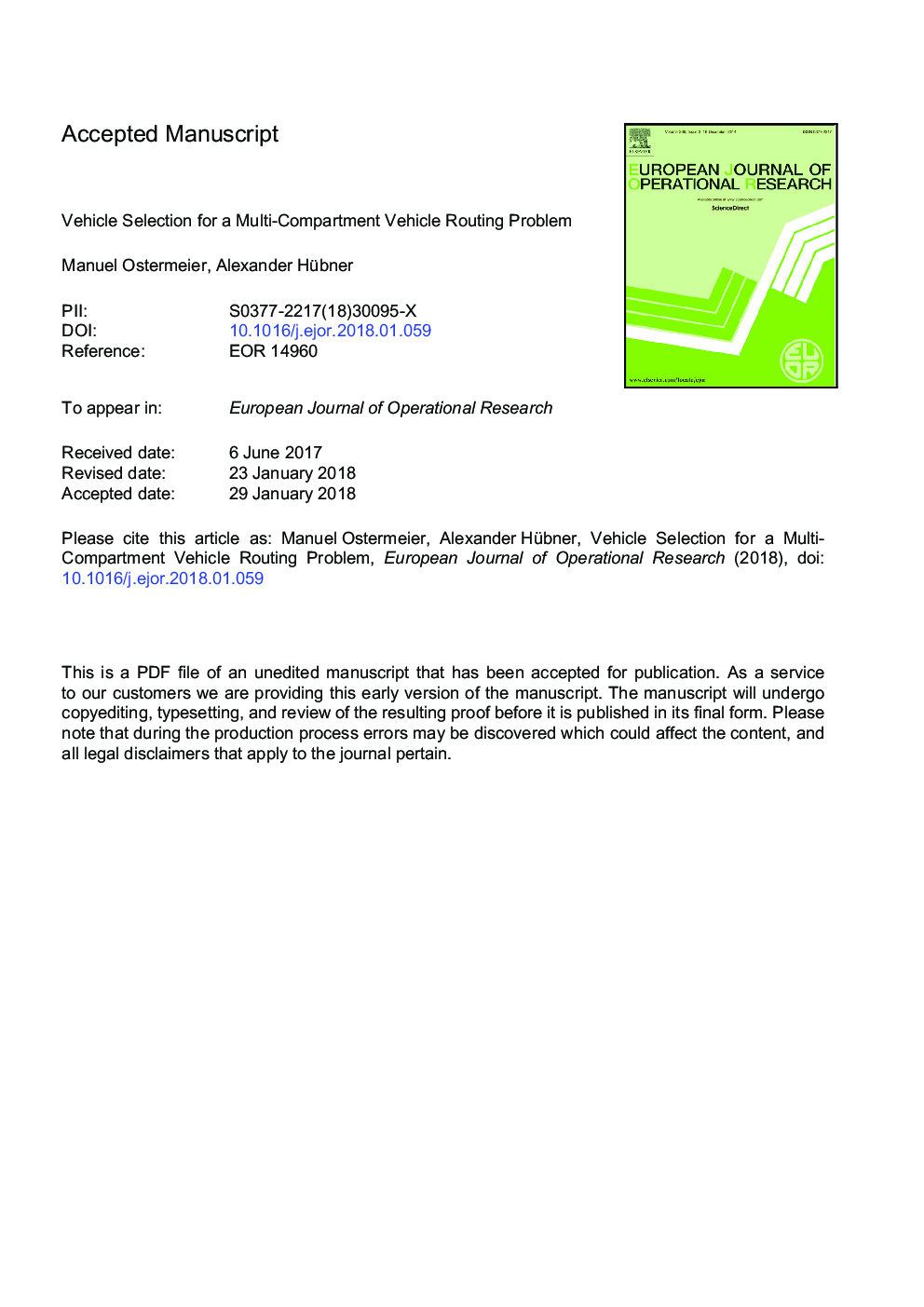| Article ID | Journal | Published Year | Pages | File Type |
|---|---|---|---|---|
| 6894726 | European Journal of Operational Research | 2018 | 31 Pages |
Abstract
This paper addresses the vehicle routing and selection problem of single and multi-compartment vehicles for grocery distribution. Retailers used to rely on single-compartment vehicles (SCV), and transported only one temperature-specific product segment with this vehicle type. Retailers now have the option of using multi-compartment vehicles (MCV) due to technological advances. Products requiring differing temperature zones can be transported jointly as the loading area is split into separate compartments. Both vehicle types cause different costs for loading, transportation and unloading. In literature either the use of SCVs or MCVs has been considered without a distinction between vehicle-dependent costs and the use of both vehicle types in the fleet to achieve a cost-optimal fleet mix. We therefore identify vehicle-dependent costs within empirical data collection and present an extended multi-compartment vehicle routing problem (MCVRP) for the vehicle selection. We solve the problem with a Large Neighborhood Search. Our numerical experiments are based on the insights we draw from a real-life case with a retailer. In further experiments we show that the mixed fleet is always better than an exclusive fleet of SCVs or MCVs and state which factors influence the cost reduction. A mixed fleet can reduce costs by up to 30%. As a result, mixed fleets are advisable in grocery distribution and vehicle selection should be part of the MCVRP.
Related Topics
Physical Sciences and Engineering
Computer Science
Computer Science (General)
Authors
Manuel Ostermeier, Alexander Hübner,
